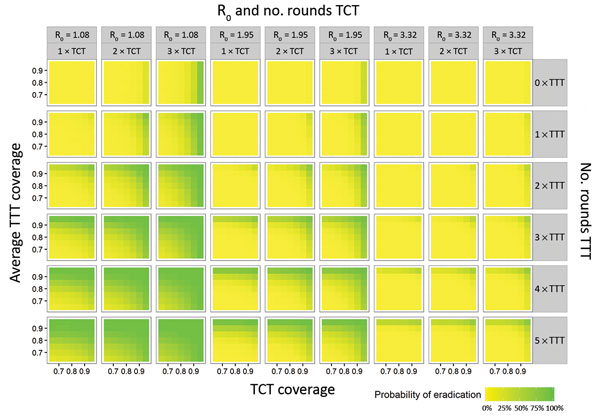Volume 23, Number 1—January 2017
Research
Mathematical Modeling of Programmatic Requirements for Yaws Eradication
Figure 2

Figure 2. Predicted probability of achieving yaws eradication given variations in the estimate of R0 (basic reproduction number), total community treatment coverage, number of rounds of total community treatment, total targeted treatment coverage (TTT), and number of rounds of TTT. For this graph, we only show simulations where the coverage of persons with latent cases is the same as the coverage of persons with active cases during TTT. This might overrepresent the actual likelihood of achieving eradication because the coverage of persons with latent cases is probably lower than the coverage of persons with active cases during TTT. R0, basic reproduction number; TCT, total community treatment; TTT, total targeted treatment.
Page created: December 14, 2016
Page updated: December 14, 2016
Page reviewed: December 14, 2016
The conclusions, findings, and opinions expressed by authors contributing to this journal do not necessarily reflect the official position of the U.S. Department of Health and Human Services, the Public Health Service, the Centers for Disease Control and Prevention, or the authors' affiliated institutions. Use of trade names is for identification only and does not imply endorsement by any of the groups named above.